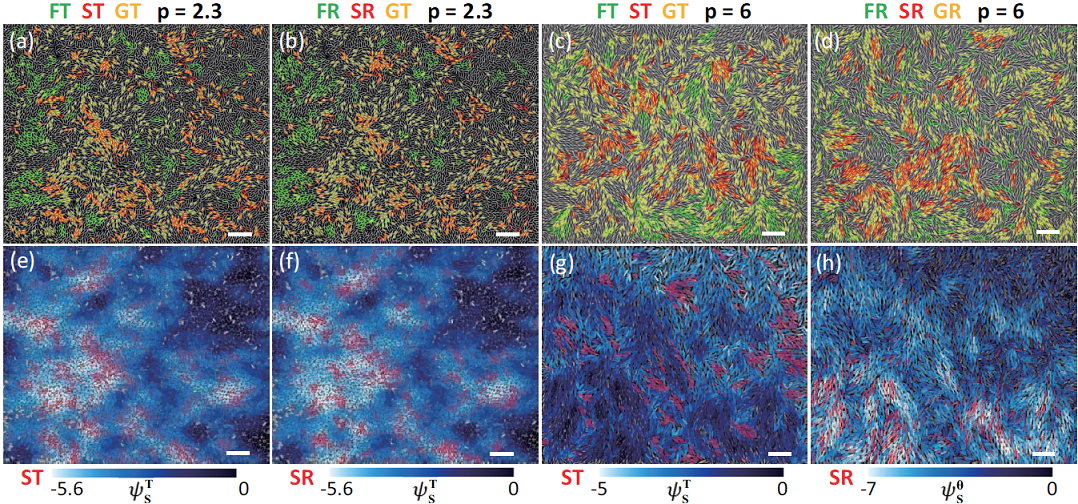- Home >> News >> Highlights
Highlights
What Stops Flows in Glassy Materials?
Various glass materials have been essential to the development of modern civilization due to their advantageous properties. Specifically, glasses have a liquid-like disordered structure but solid-like mechanical properties. This leads to one of the central mysteries of glasses: “Why don't glasses flow like liquids?” This question is so important that it was selected by the journal Science in 2005 as one of 125 key, unanswered scientific questions, and one of 11 unsolved important physical issues.
We can hardly observe the movements of atoms at a ~0.1 nanometer length scale and a ~1 nanosecond time scale. Fortunately, however, scientists have found that colloidal systems have similar phase behaviors as atomic systems. Colloids are regarded as big “atoms” that reveal microscopic information about phase transitions that can’t be easily obtained from atomic materials.
In the past decade, colloidal glasses have drawn a lot of interest, resulting in numerous important discoveries. However, most of these studies are about spherical particles that tend to form local or intermediate-range crystalline structures. Unfortunately, such studies are not broadly applicable since most glasses are not composed of spheres and have no crystalline structure.
To counter this problem, researchers from the Institute of Mechanics of the Chinese Academy of Sciences and Hong Kong University of Science and Technology recently conducted experimental studies for the first time on glassy systems composed of nonspherical particles.
The researchers found that the monolayers of monodisperse ellipsoids are good glass formers and do not form local crystalline structures. Thus, they provide an ideal and general system for detecting the structural origin of slowing dynamics as the glass transition is approached.
In fact, glass formers have strong dynamic heterogeneities, i.e., some regions move fast and some move slow. These results show that structures with low structural entropy correspond well with slow dynamics, whereas fast relaxing (flowing) regions have high structural entropy.
In glasses composed of spherical particles, some polyhedral structures were usually regarded as responsible for the slow dynamics. However, a type of polyhedron only exist in certain systems of spheres. Structural entropy measures the level of disorder in a structure, including various specific local structures, e.g. virous polyhedra that exist in systems composed of spheres. So, the low structural entropy is a general structural feature of slow dynamics in glassy matter, which holds in systems composed of spheres and non-spheres.
In addition, the researchers observed Ising-like critical behaviors at an ideal glass transition point in both static structures and slow dynamics. Such behaviors are a quantitative feature of thermodynamic transition that explains whether glass transition is purely dynamic or thermodynamic (structural), since there are no ordering structures in glasses.
“The observation of critical behaviors in ellipsoid glasses provides much more solid quantitative evidence of the thermodynamic nature of glass transition,” said WANG Yuren, corresponding author of the study. “The results shed new light on both the mysteries of glass theory and designing materials with high stability and glass forming ability.”

